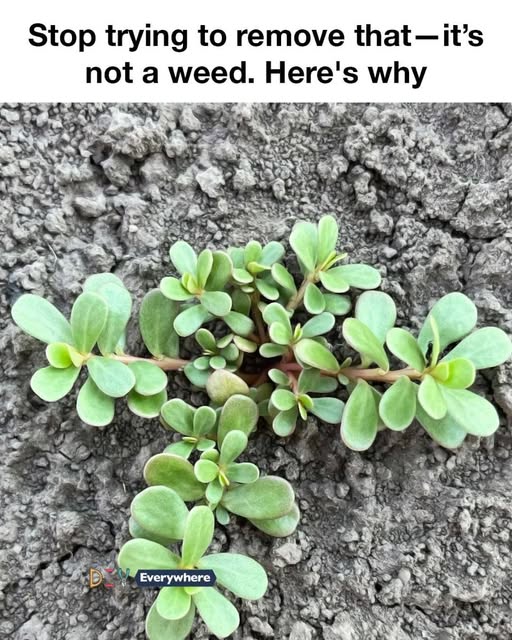6. Purslane in Traditional Medicine
Purslane has been used in traditional medicine for centuries. It is believed to have anti-inflammatory and diuretic properties, making it useful for treating a variety of ailments. In traditional Chinese medicine, purslane is used to treat infections and skin conditions due to its cooling and detoxifying properties.
Research has shown that purslane contains compounds such as flavonoids and alkaloids, which may contribute to its medicinal effects. While more studies are needed to fully understand its potential health benefits, purslane’s long history of use in traditional medicine suggests it has valuable therapeutic properties.
7. Purslane’s Drought Resistance
One of purslane’s most remarkable traits is its drought resistance. Its succulent leaves store water, allowing it to survive in arid conditions where other plants might wither. This makes purslane an excellent choice for gardens in regions prone to drought or for gardeners looking to reduce their water usage.
By incorporating drought-resistant plants like purslane into your garden, you can create a more sustainable and resilient landscape. This not only conserves water but also reduces the need for irrigation, saving time and resources.
8. How Purslane Supports Pollinators
Purslane’s small, yellow flowers are a magnet for pollinators such as bees and butterflies. These insects are crucial for the pollination of many crops and wild plants, and their populations are declining due to habitat loss and pesticide use. By providing a food source for pollinators, purslane helps support their populations and contributes to the health of local ecosystems.
Encouraging the growth of pollinator-friendly plants like purslane in your garden can help create a more inviting environment for these essential insects. This not only benefits the pollinators themselves but also enhances the overall health and productivity of your garden.
9. Purslane’s Role in Soil Health
Purslane contributes to soil health in several ways. Its roots help prevent soil erosion by stabilizing the soil and reducing runoff. This is particularly important in areas prone to heavy rainfall or wind, where soil erosion can be a significant problem.
Furthermore, purslane’s presence in the soil can improve its structure and fertility. As the plant decomposes, it adds organic matter to the soil, enhancing its nutrient content and promoting the growth of beneficial microorganisms. This can lead to healthier, more productive soil that supports a wider range of plant life.
10. Viral Hacks: Incorporating Purslane into Your Garden
Incorporating purslane into your garden can be a simple and rewarding process. Start by identifying areas where purslane naturally grows and allow it to flourish. You can also propagate purslane by taking cuttings from existing plants and planting them in desired locations.
Consider using purslane as a ground cover in areas where you want to suppress weeds or conserve water. Its low-maintenance nature makes it an ideal choice for busy gardeners or those looking to reduce their environmental impact. By embracing purslane, you can create a more sustainable and biodiverse garden.
11. Debunking Myths: Why Purslane Isn’t Just a Weed
Despite its reputation, purslane is far more than just a weed. Its nutritional value, ecological benefits, and culinary versatility make it a valuable plant that deserves recognition. By debunking the myths surrounding purslane, we can begin to appreciate its many benefits and incorporate it into our gardens and diets.
As we shift towards more sustainable gardening practices, it’s important to reconsider what we classify as ‘weeds.’ Plants like purslane offer a wealth of benefits that can enhance our gardens, our health, and our environment. By embracing these misunderstood plants, we can create a more sustainable and resilient future.
ADVERTISEMENT

